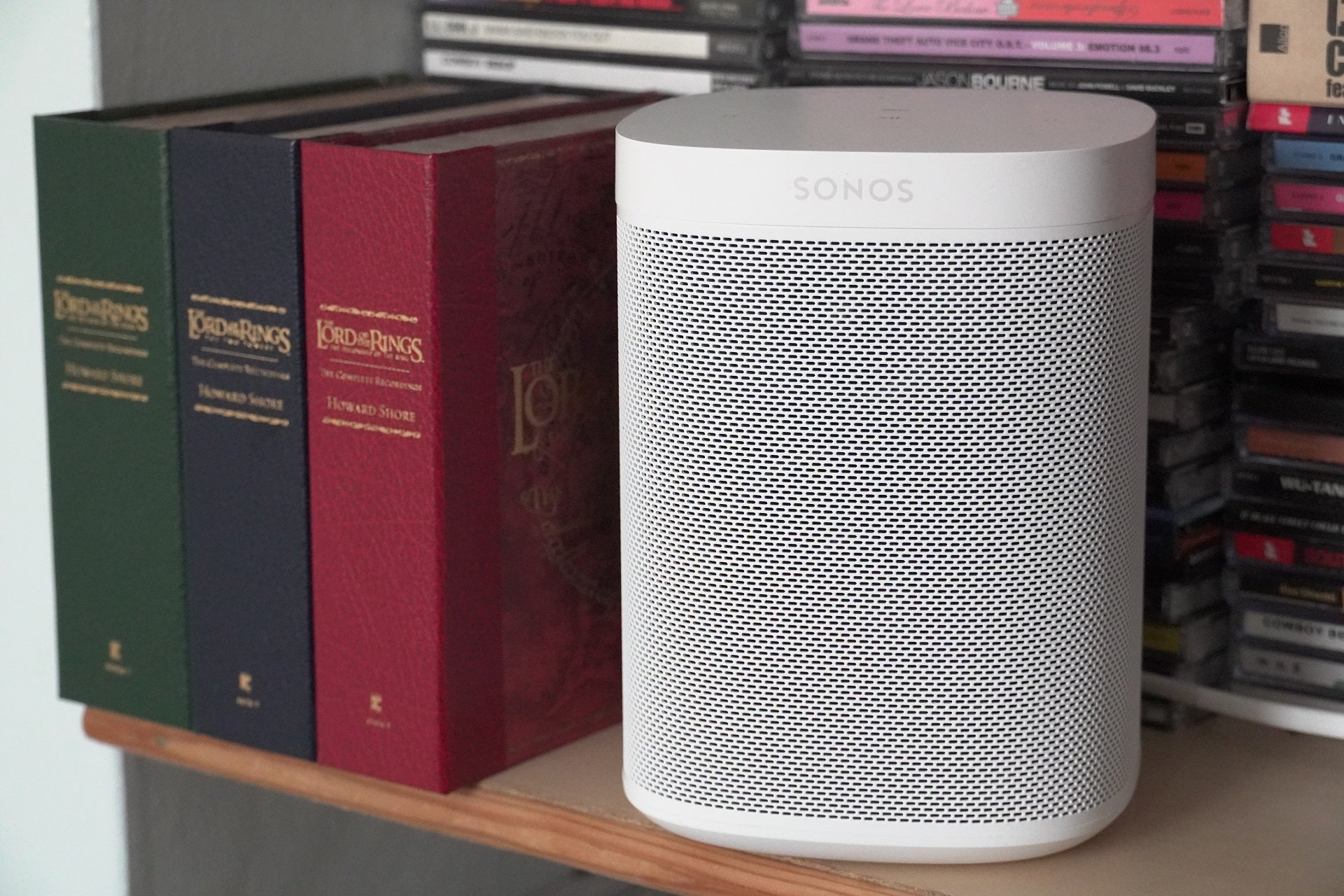Google Nest Audio Review
A solid smart speaker that’ll meet most people’s needs.
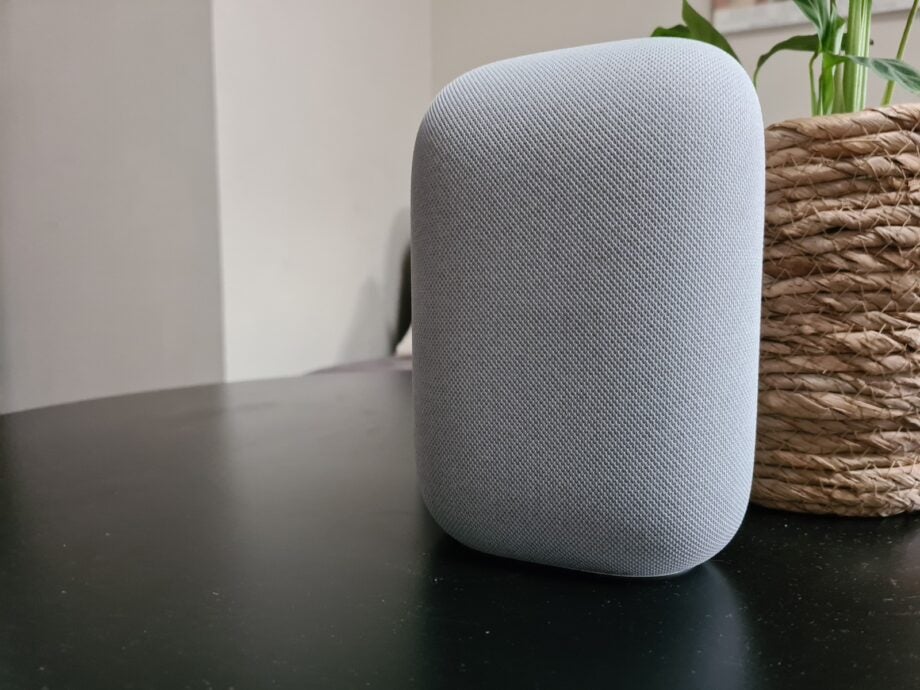

Verdict
The Nest Audio is a solid smart speaker that’ll meet most people’s needs.
Pros
- Improved sound
- Discrete design
- Easy setup
Cons
- Buggy
Key Specifications
- Review Price: £89.99
- 75mm woofer and 19 mm tweeter
- Physical mute button
- WiFi/Bluetooth
- Google Assistant functionality
- 3 far field mics
The Nest Audio is Google’s latest rival to the Amazon Echo 4. It sits between the super small Nest Mini and Google Home Max in the tech giant’s speaker line and is being marketed as the best choice for “most people”.
Carrying the Nest smart home branding rather than the old Google Home naming, the majority of changes have been made to the speaker’s hardware and tuning, with Google claiming it’s the best sounding smart speaker on the market and a clear step up on the older Home in nearly every way.
Having thoroughly put the device through its paces we can confirm the Google Nest Audio is an improvement on its predecessor and an ideal purchase for any budding smart home builder looking for an affordable, discrete and easy to set-up speaker.
But, despite the good work by Google, for discerning listeners, there are better sound speakers on the market from the likes of Sonos.
Related: Best multi-room speakers
Price and Availability
The Google Nest Audio was first released in 2020, and it costs £90 / $99 / €100 / AUD$149.
Design
- The Google Nest Audio has a plain finish, woven grille. It’s discrete design means it’ll fit into most rooms without becoming a focal point
- The Nest Audio requires a cabled power connection to work
- The Nest Audio’s chassis is majority made of recycled parts
The Nest Audio has a distinctly Google look. It shares the same DNA as its older sibling, the Nest Mini, featuring a monotone woven finish that, according to Google, is made up of 70% recycled plastic.
The only difference is that, unlike the Mini, the speaker is designed to stand tall measuring in at 6.9-inches tall and 3.1-inches thick. This is a bid to let it sit flush against walls on fairly thin surfaces, such as kitchen counters.
The combination of factors let the Nest Audio fit discreetly into most home environments with zero fuss. The only downside is that, like most smart speakers, it isn’t waterproof, so you won’t be able to set it up in a bathroom.
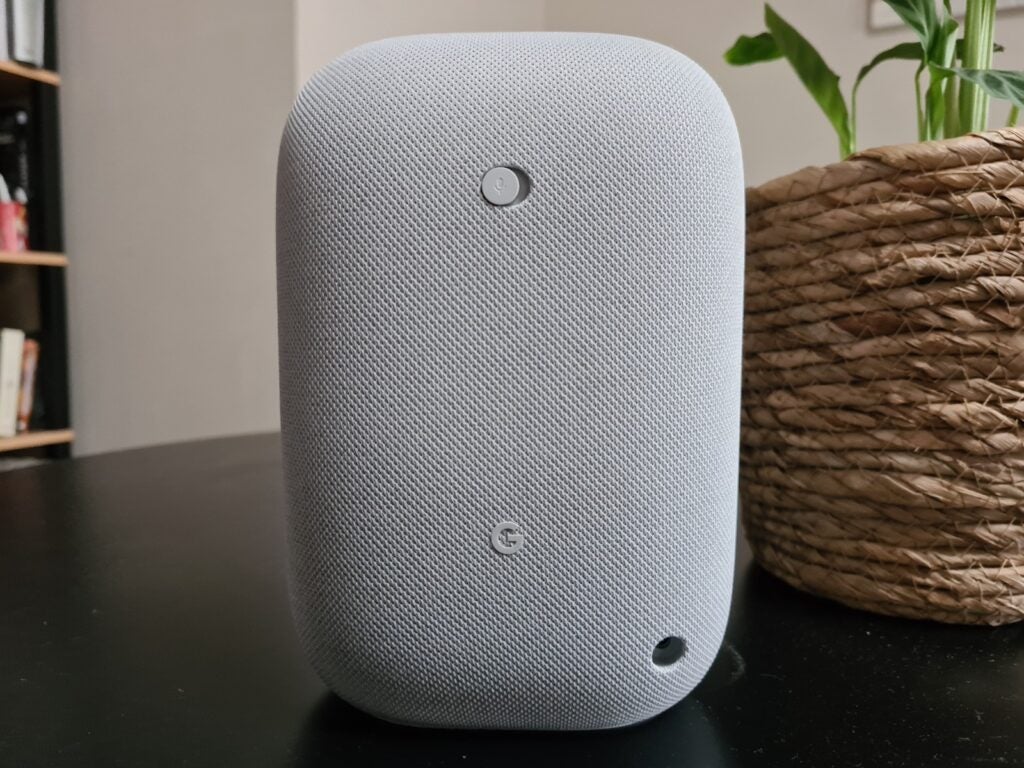
Like past Home and Nest speakers, the Nest Audio also requires a cabled power source. This sits on the speaker’s back just below the Nest Audio’s mic control, which lets privacy-focused users mute its three far-field mics, stopping it listening in on conversations at a hardware level. The front of the speaker has capacitive physical controls to tweak the volume, skip tracks and play/pause music, if you prefer to keep the mics off.
Whichever you choose, the setup process is blissfully easy. All you have to do is plug it in, download the Home app on your smartphone or tablet and run through a quick set of on-screen prompts connecting it to your Wi-Fi and Google account. Once done it’ll automatically sync with any other smart home kit you have paired.
Related: Nest Audio vs Google Home
Features
- The Nest Audio offers much better audio than its predecessor
- But it’s still not as good for music as some competing smart speakers from the likes of Sonos
The bigger changes have been made under the hood. Google has loaded the speaker with a larger 75mm woofer and 19 mm tweeter than the previous Google Home.
Google claims this, plus more focused tuning, lets the speaker offer significantly tighter bass that’s 50% “stronger” than before. The Nest Audio also has 75% louder max volume levels, according to the spec sheet. The work has paid off as I can confirm the speaker is a lot louder than the older Google Home.
As to overall quality, compared to the older Echo and Home speakers, the Nest Audio is a definite step in the right direction and good enough for most casual listeners. Listening to music at sensible volumes, vocals are clear, and the audio is suitably detailed.
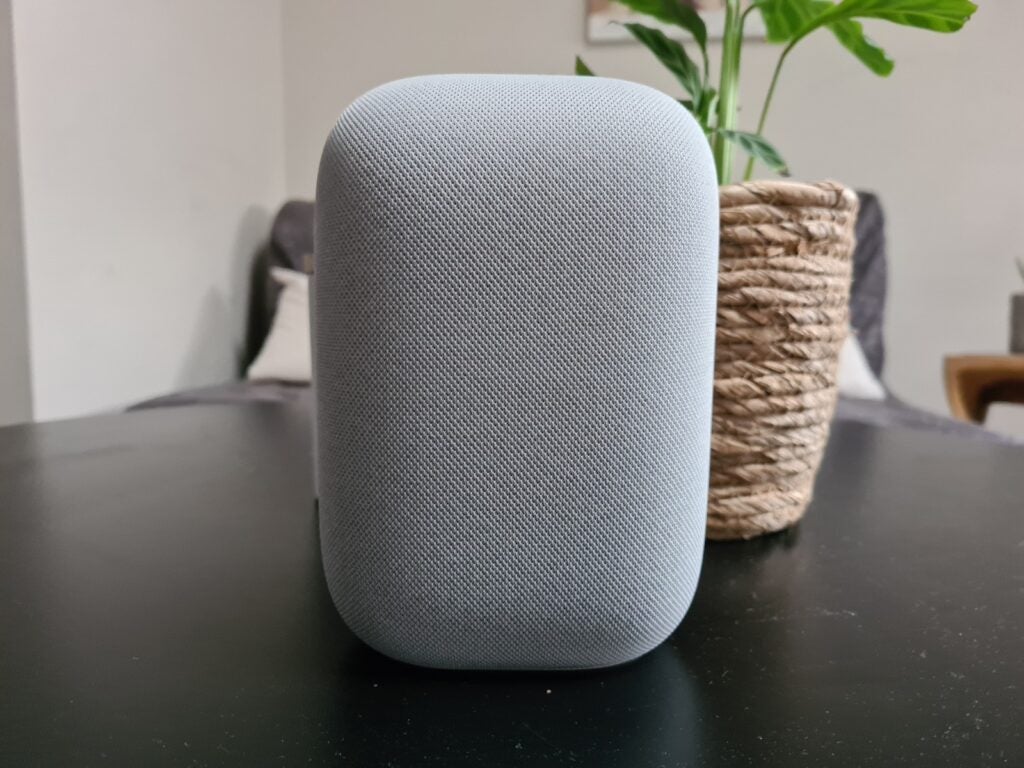
Jazz piano keys sound sharp and have a pleasing sparkle. Layered classical arrangements each part of the orchestra held a distinctly separate part of the sound. My only minor quibble would be that the sound is a little warm. The low end on occasion didn’t feel as tight as I’d like, especially when compared to the more expensive Sonos One, which has a noticeably more natural sound. But at this price that’s hardly surprising.
At higher volumes, things can get a little dicey, however. Cranking up the speaker to anything past 80% and distortion will creep in. This is particularly noticeable in more aggressive genres, like metal and punk. The issue can also occur even when you keep an eye on the volume thanks to Google’s media EQ and Ambient IQ features.
These let the Nest Audio scan and optimise its audio settings based on what you’re listening to and its environment, to do things like automatically raise the volume when it detects excessive background noise. I found the feature works well enough but on occasion, the speaker’s volume would unexpectedly spike to disproportionate levels when there was noticeable background noise, such as a washing machine running.
Smart functionality
- The Nest Audio’s primary selling point is its Google Assistant/smarthome integration, which lets you control compatible tech with voice commands
- It’s reworked mic system means it can understand most accents and voice commands from surprisingly long distances
But as ever what makes the Nest Audio different to normal wireless or multi-room speakers is its smart functionality.
Here the Nest Audio offers fairly similar features to the Nest Mini. At a basic level, this means you can interact with it using voice commands. But at a more complex level, you can also quiz Google Assistant about the weather or use it to control other bits of compatible smart home kit. This means, if you have other Google speakers, you can create multi-room or stereo setups using the Nest Audio.
Outside of Google’s own tech, the speaker works with most of the major names. Specifically, Google lists the Nest Audio as working with a portfolio of 100 million devices from big-name brands including Philips Hue and TP-Link. I tested the speaker in a two-bed flat paired with Philips Hue lighting, a Nest camera and Nest Mini.
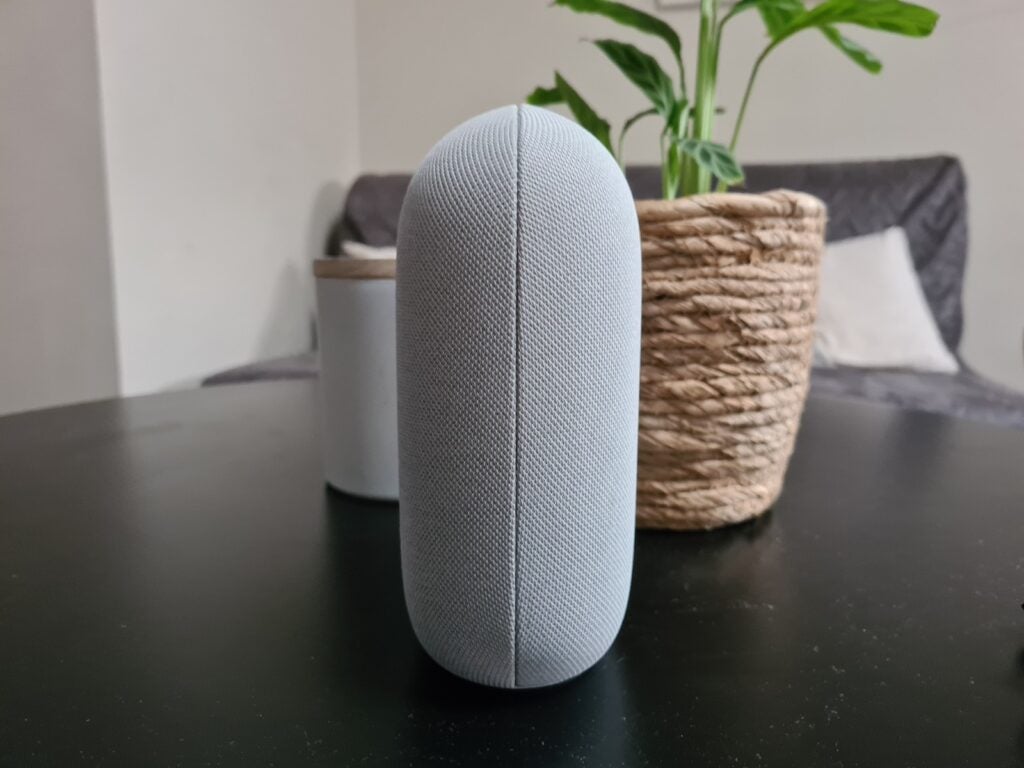
Here the smart functionality generally worked well, but there are a few bugs in the system. Voice commands generally worked well as the speaker never struggled to hear me, even when I was shouting from the other side of the lounge.
But on more than one occasion the speaker would stall and refuse to accept a command when I paused music in one room on the Nest Audio and tried to resume it in another on the mini. The issue sounds small but it occurred enough times to cause annoyance and break the otherwise streamlined experience.
Conclusion
If you’re on the market for a smart speaker then the Google Nest Audio is a solid option. It offers better audio than its predecessor and easily matches its Echo rivals when it comes to smart features.
The only downside is that there are still some bugs when using it in multi-room setups and there are better-sounding systems from the likes of Sonos if you’re willing to spend a little more.
You should buy it if…
- You are heavily invest on Google’s smart home ecosystem: If you want a smart speaker to act as a command station for your other smart home products then the Nest Audio is a fantastic option. It’s mics are best in class and the speaker’s easy setup process makes it brilliantly easy to integrate into most smart home setups.
You shouldn’t buy it if…
- You care more about audio quality: The Google Nest Audio doesn’t sound terrible, but it’s far from matching the best Bluetooth speakers we’ve tested when it comes to audio quality. If this is your primary concern you’d be better off looking at a more expensive speaker from a dedicated audio brand, such as Sonos.
FAQs
The Google Nest Audio is a mid-range smart speaker designed to compete with the Amazon Echo.
We gave it a 4-star rating, as it’s a great alternative to the Amazon Echo, but doesn’t quite have audio chops to compete with the Sonos One, while also having buggy software when using it for multi-room setups.
The Nest Audio requires a cabled power source to function, so is not wireless.
The Google Nest is small enough to carry around, but needs to be plugged into the mains and connected to a Wi-Fi network to function, and therefore isn’t really really portable.
Specs
Jargon buster
Tweeter
A tweeter is a type of loudspeaker driver that’s designed to reproduce high frequency (treble) sounds.
Woofer
A woofer is a type of loudspeaker driver designed to reproduce low frequency (bass) sounds
Smart Speaker
A smart speaker differs from a standard wireless speaker by being able to connect to the internet, communicate with other devices on the same network and stream content over a Wi-Fi connection. Smart speakers can often be controlled via spoken commands through digital assistants such as Amazon Alexa, Google Assistant or Apple Siri.
Bluetooth
Bluetooth is a method of wireless transmission that allows for the exchange of data between devices over short distances.
Multiroom audio
Multi-room refers to the act of grouping wireless audio systems together to play/control music throughout a home. For example, Multi-room systems can allow for the same piece of music to be played on all connected systems, or different music played on each individual speaker.
Google Assistant
A voice assistant which is Google’s take on Amazon’s Alexa.

